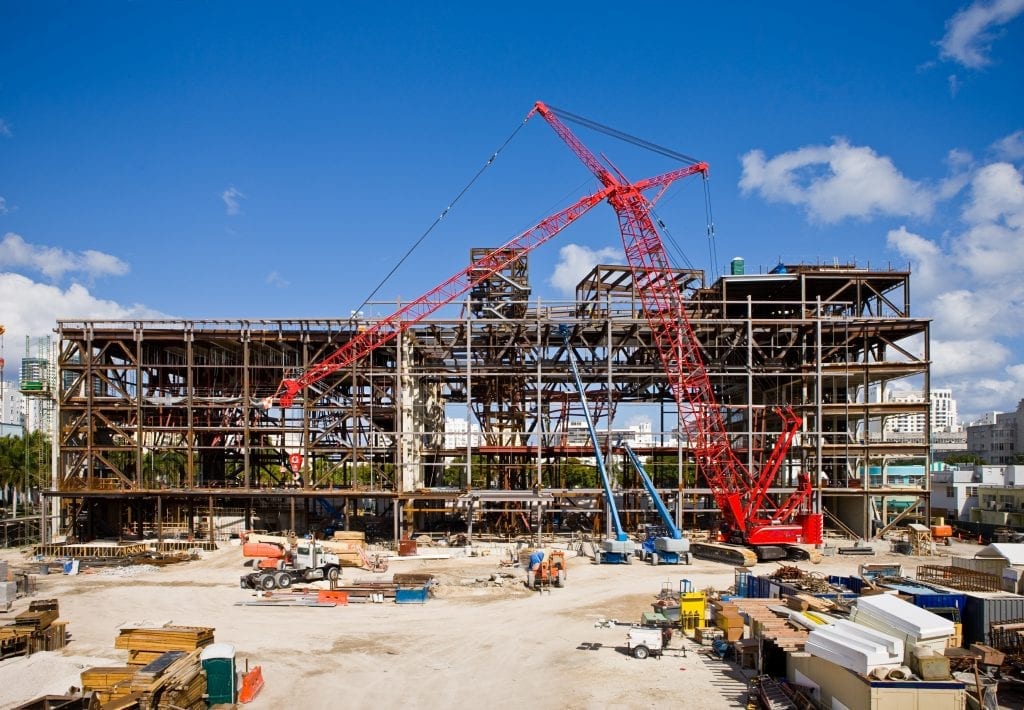More than 900 workers die on construction job sites annually, and many more are injured, often seriously. By far, the leading cause of injuries on construction sites is falling. Falling accidents cause more than 350 construction worker deaths each year.
Unless you are meticulous in your fall protection standards, it’s likely that your job sites harbor hidden falling dangers, and if so–it’s only a matter of time before tragedy strikes. Every year, OSHA cites more than 13,000 fall-related safety violations on construction sites, and those are only the violations they catch.
In fact, fall protection violations are so common that failure to meet fall protection standards made up six out of the top ten OSHA standard violations for 2016, including all of the top 4. Here are the top six fall protection standards you may be violating, and how to ensure your construction sites remain in compliance.
One: Duty to Have Fall Protection
Standard 1926.501 is OSHA’s most frequently violated standard in the construction industry. To meet the standard, you must:
- Ensure that walking and working surfaces have the strength and structural integrity to support your employees safely.
- Provide guardrail systems, safety net systems, or personal fall arrest systems for any walking or working surface with an unprotected side that is 6 feet or more above a lower level.
- Cover or otherwise guard access to wells, pits, shafts, and holes with a drop of 6 feet or more.
- Ensure that workers on roofs with unprotected edges are protected by systems of guardrails, safety nets, or personal fall protection.
- Cover or otherwise guard workers from falls through holes in walls.
The standard also covers the duty to ensure workers are protected from falling objects, by hard hats and canopies. Read the complete standard here.
Two: Safe Scaffolding
Standard 1926.451 is OSHA’s second most-violated standard in the construction industry. To meet the standard, employers must:
- Ensure all scaffolds and scaffold components are capable of supporting their own weight and at least 4 times the maximum intended load.
- Ensure that supports are in place that meet specifications in regard to tipping point, based on the type of support.
- Ensure that scaffold loads are appropriate to the scaffold rating.
- Ensure that scaffolds are designed by a qualified person.
- Ensure that each platform is planked appropriately.
- Ensure that all gaps between elements of the structure and adjacent structures fall within specifications.
- Ensure that scaffolds meet all the other specifications in the standard.
You can read the complete standard here.
Three: Stairways and Ladders
Standard 1926.1053 is OSHA’s third most-violated safety standard in the construction industry. Among other criteria, the standard states that employers must:
- Ensure that all ladders, including job-made ladders, meet all OSHA-mandated requirements.
- Ensure that all ladder rungs, cleats, and steps are parallel, level, uniformly spaced, and of a safe distance apart.
- Ensure that ladders are resistant to slippage and other footing-related hazards.
- Ensure that all ladders are used on the site in such a fashion as to avoid unnecessary hazards such as improper connections, improper load bearing, or inadequate protection from falling objects.
- Ensure that cages, wells, and other related structures meet all safety criteria.
The standard for ladders and stairwells includes a long list of additional, detailed specifications that you as the employer are responsible for. Read the full standard here.
Four: Fall Protection: Training Requirements
Standard 1926.503 is OSHA’s fourth most-violated safety standard in the construction industry. This standard requires that employers provide training to all employees who might be exposed to falling hazards. The training must be provided by a qualified individual and prepare employees to recognize and avoid falling hazards. Among other information, the program must inform employees of:
- The nature of fall hazards in the work area
- Correct procedures for erecting, maintaining, disassembling, and inspecting fall protection systems
- Use and operation of fall protection systems and controlled access zones
- The role of each employee in the safety monitoring system
- The limitations of fall protection systems
You can read the complete standard here.
Five: Aerial Lifts
Standard 1926.453 is OSHA’s 9th most-violated safety standard in the construction industry. This standard defines aerial lifts and requires that they be “designed and constructed in conformance with the applicable requirements of the American National Standards for ‘Vehicle Mounted Elevating and Rotating Work Platforms,” ANSI A92.2-1969, including appendix.”
Additionally, it specifies that:
- Lift controls must be tested each day prior to use
- Lifts must be operated only by qualified personnel
- Employees must stand in the bucket, and not sit on the sides
- Additional personal fall protection equipment must be employed
- Load limits specified by the manufacturer must not be exceeded
You may read the complete standard here.
Six: Fall Protection Systems Criteria and Practices
Standard 1926.502 is OSHA’s 10th most-violated safety standard in the construction industry. This standard expands on requirements for guardrail and other protective systems in relation to fall hazards on the job site. Among other things, it specifies fall protection systems requirements including:
- Height
- Strength
- Design
- Construction
- Use
You can read the complete standard here.
Faithfully meeting OSHA safety standards for fall protection can be life or death for your workers. Don’t let your jobsite or employee be the next fatality statistic. Contact our team to find out how we can help you protect your workers.



